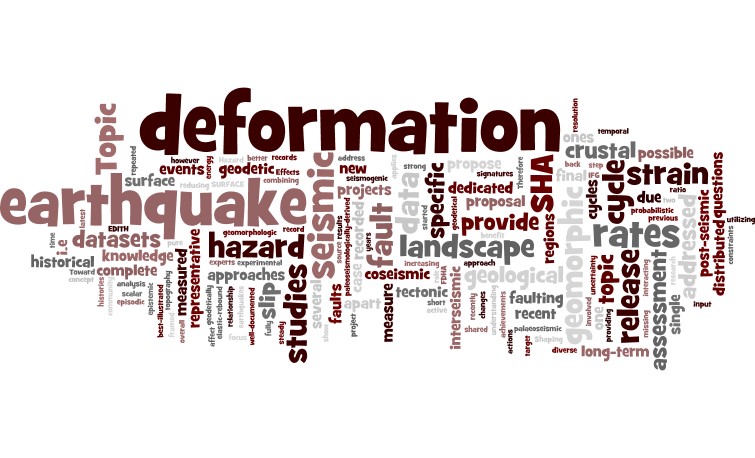EDITH objectives
***PROJECT EDITH WAS ACTIVE IN THE 2019-2023 INTERCONGRESS PERIOD***
WHY ARE WE LOOKING FOR A NEW APPROACH?

Since the introduction of the elastic rebound theory (Reid, 1910), this model focussed on the seismogenic structure, the fault, as a geological and structural feature in a deforming crust.
Nevertheless, since crustal strain was not easily measurable, early researchers focussed their attention on the analysis of earthquakes through seismology. In addition, elastic rebound theory breaks down when multiple faults occur in the same region and interact with each other to generate complex multi-fault earthquakes.
EDITH is an exciting opportunity to come back to Reid’s legacy and to quantitively bring together coseismic, post-seismic and interseismic deformation of the crust before, during and after destructive earthquakes. Almost 30 years after the seminal works on InSAR applied to coseismic deformation detection (the 1992 Landers earthquake) and following more than 20 years of GPS measurements and implementation worldwide, the time has come to bring together a community of people involved in research that can shed a light on these topics. On a wider perspective, this would potentially open the way to the extrapolation of the seismic cycle behaviour over longer time windows, directly talking to tectonic-geomorphology and back to the seismic landscape of a region.

We will seek this target framing our discussion on three main Topics.
Topic 1 – Into the Seismic Cycle
This topic is specifically framed to analyse the seismic cycles of faults that have the best-studied and well-known earthquakes histories. Ideally, we will study faults where a range of data sets cover the complete seismic cycle. Using case studies, we want to answer some of the following questions.
– What are the differences between geodetically measured slip on fault and the field-observed one? Are paleoseismologically-derived slips overestimated?
– What is the strain distribution at the surface in a fault zone during coseismic deformation (i.e., amount of distributed faulting or distributed deformation)?
– Is interseismic deformation a steady process or does it show episodic events?
– Can we propose a geodetic measure of earthquake strain release, such as scalar measure of the crustal deformation due to fault movement?
– Can historical shaking data be used as a proxy for the coseismic deformation field?
Topic 2 – Shaping the Earth
This topic is focussed on upscaling the datasets from Topic 1 to a temporal and spatial resolution that encompasses many earthquake cycles.
– What is the ratio of deformation rates measured through different approaches: geodetic, palaeoseismic and geological?
– What is the response of the landscape to tectonic deformation and repeated surface faulting? What is the sensitivity of diverse geomorphologic settings to increasing levels of earthquake energy release?
– Are single earthquakes representative of the long-term deformation pattern recorded by geomorphic signatures in the landscape? Are paleoseismological deformation rates representative of the tectonic ones?
– Which Earthquake-induced Environmental Effects (EEEs) are directly influenced by permanent ground dislocation, apart from the primary ones? Is there a role played by changes in the topography and the relation to earthquake strong motion?
Topic 3 – Toward Seismic Hazard Assessment
This final topic will summarize the achievements of the two previous topics, aimed at providing new input data for seismic hazard assessment (SHA). Current SHA efforts focus on utilizing recent earthquake data recorded from instrumental and historical records. However the historical record of earthquakes is too short to fully understand the earthquake cycle in active regions and therefore such an approach could under- or over-estimate the hazard. Therefore, by combining the understanding of how individual earthquake manifest and affect the geomorphic landscape, we will determine how the geomorphic landscape could be incorporated quantitatively into SHA.

